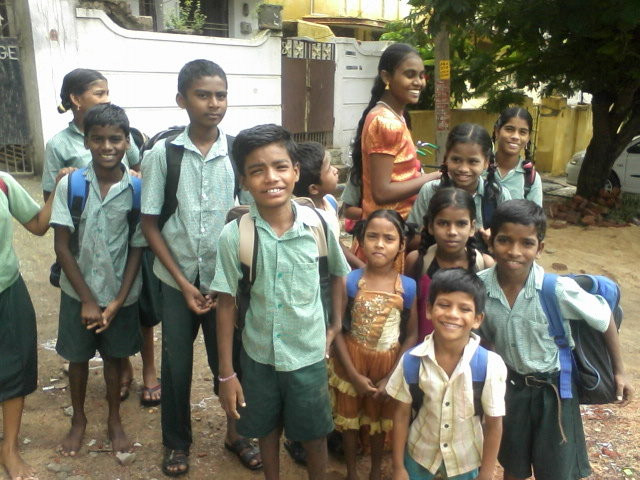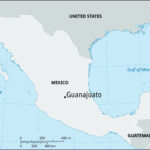Are you planning a trip to Mexico and curious about its stunning Gulf coastline? At gaymexico.net, we understand the importance of having accurate information, especially for LGBTQ+ travelers looking for safe and welcoming destinations. We can confirm that Mexico boasts an impressive coastline along the Gulf of Mexico. We offer detailed guides, resources, and community insights to help you plan your perfect getaway, so you can discover the best of Mexico’s coastal charms.
1. What is the Length of Mexico’s Coastline in the Gulf of Mexico?
Mexico has approximately 1,743 miles (2,805 kilometers) of coastline bordering the Gulf of Mexico. This extensive coastline offers a diverse range of beaches, from bustling resort towns to secluded natural havens. Knowing this helps you plan your trip to the perfect Mexican beach, whether you want a lively gay-friendly resort or a peaceful spot to relax.
1.1. Which Mexican States Border the Gulf of Mexico?
Several Mexican states border the Gulf of Mexico, each offering unique attractions and cultural experiences. These states include:
- Tamaulipas: Known for its beautiful beaches and vibrant coastal communities.
- Veracruz: Famous for its rich history, delicious cuisine, and lively cultural scene.
- Tabasco: Home to lush rainforests, ancient ruins, and diverse wildlife.
- Campeche: Renowned for its well-preserved colonial architecture and serene coastal towns.
- Yucatán: Celebrated for its stunning Mayan ruins, cenotes, and beautiful beaches.
1.2. What is the Significance of the Gulf of Mexico to Mexico?
The Gulf of Mexico holds significant economic, environmental, and cultural importance for Mexico. Economically, the Gulf supports Mexico’s fishing industry, tourism sector, and oil and gas production. Environmentally, it is a rich ecosystem, home to diverse marine life and critical habitats. Culturally, the Gulf has shaped the traditions and identities of the coastal communities that depend on it.
:max_bytes(150000):strip_icc()/mexico-yucatan-celestun-rio-lagartos-56a3b3965f9b58b7d0d39768.jpg)
2. How Does Mexico’s Gulf Coastline Compare to That of the United States?
The United States has approximately 1,631 miles of coastline along the Gulf of Mexico, slightly less than Mexico’s 1,743 miles. While both countries share the Gulf, their coastlines offer distinct characteristics and attractions.
2.1. What U.S. States Border the Gulf of Mexico?
The U.S. states that border the Gulf of Mexico are:
- Florida: Known for its beaches, theme parks, and vibrant cities.
- Alabama: Famous for its history, culture, and coastal charm.
- Mississippi: Celebrated for its hospitality, seafood, and scenic drives.
- Louisiana: Renowned for its music, cuisine, and unique cultural heritage.
- Texas: Known for its vast landscapes, diverse cities, and rich history.
2.2. How Do the Coastal Environments Differ Between Mexico and the U.S.?
The coastal environments of Mexico and the U.S. along the Gulf of Mexico differ in several ways. Mexico’s Gulf Coast features a mix of sandy beaches, rocky shores, and mangrove forests, while the U.S. Gulf Coast is characterized by sandy beaches, barrier islands, and coastal wetlands. The climate, flora, and fauna also vary between the two regions, reflecting their unique geographical and ecological characteristics.
3. What are the Top Destinations Along Mexico’s Gulf Coast for LGBTQ+ Travelers?
Mexico’s Gulf Coast offers numerous welcoming and exciting destinations for LGBTQ+ travelers. Whether you’re looking for vibrant nightlife, cultural experiences, or relaxing beach getaways, there’s something for everyone.
3.1. What Makes Veracruz a Great Destination?
Veracruz is a vibrant port city known for its rich history, lively music scene, and delicious cuisine. The city offers a welcoming atmosphere for LGBTQ+ travelers, with numerous bars, restaurants, and cultural attractions to explore. The annual Veracruz Carnival is a highlight, featuring colorful parades, music, and dance.
3.2. What is the Appeal of Tamaulipas?
Tamaulipas offers a mix of natural beauty and cultural attractions. The state is home to beautiful beaches, nature reserves, and historic towns. While LGBTQ+ specific venues may be limited, the warm hospitality of the locals and the stunning scenery make it a worthwhile destination for adventurous travelers.
3.3. Why Should You Visit Yucatán?
Yucatán is famous for its Mayan ruins, cenotes (natural sinkholes), and beautiful beaches. The state offers a unique blend of history, culture, and natural beauty. While not exclusively known as an LGBTQ+ hotspot, cities like Mérida are becoming increasingly open and accepting, with a growing number of gay-friendly establishments.
4. What Activities Can You Enjoy Along Mexico’s Gulf Coast?
Mexico’s Gulf Coast offers a wide array of activities for every type of traveler. Whether you’re interested in water sports, cultural exploration, or simply relaxing on the beach, you’ll find plenty to keep you entertained.
4.1. What Water Sports are Available?
The Gulf Coast is a paradise for water sports enthusiasts. Popular activities include:
- Snorkeling and Scuba Diving: Explore the vibrant coral reefs and diverse marine life.
- Fishing: Charter a boat for deep-sea fishing or try your luck from the shore.
- Kayaking and Paddleboarding: Discover hidden lagoons and tranquil waterways.
- Sailing: Enjoy the gentle breezes and stunning coastal scenery.
- Windsurfing and Kiteboarding: Take advantage of the consistent winds and waves.
4.2. What Cultural Activities Can You Experience?
Immerse yourself in the rich culture of Mexico’s Gulf Coast through various activities:
- Visiting Mayan Ruins: Explore ancient archaeological sites like Chichen Itza and Tulum.
- Exploring Colonial Cities: Discover the charming architecture and history of cities like Campeche and Veracruz.
- Attending Local Festivals: Experience the vibrant music, dance, and traditions of local celebrations.
- Sampling Regional Cuisine: Indulge in the delicious flavors of Gulf Coast cuisine, from fresh seafood to traditional dishes.
- Visiting Museums and Art Galleries: Learn about the history, art, and culture of the region.
4.3. Where Can You Relax on the Beach?
The Gulf Coast boasts numerous stunning beaches perfect for relaxation:
- Cancun: Known for its white sand beaches, turquoise waters, and lively atmosphere.
- Playa del Carmen: Offers a mix of beautiful beaches, trendy restaurants, and vibrant nightlife.
- Tulum: Famous for its stunning beaches, Mayan ruins, and eco-friendly resorts.
- Cozumel: Renowned for its crystal-clear waters, coral reefs, and laid-back vibe.
- Isla Mujeres: Offers a tranquil escape with beautiful beaches, snorkeling, and charming local culture.
5. How Safe is Mexico’s Gulf Coast for LGBTQ+ Travelers?
While Mexico is generally considered a welcoming country for LGBTQ+ travelers, it’s essential to be aware of local attitudes and take necessary precautions to ensure your safety and well-being.
5.1. What are the Local Laws and Attitudes?
Mexico has made significant progress in LGBTQ+ rights, with same-sex marriage legal throughout the country. However, attitudes towards LGBTQ+ individuals can vary depending on the region and local culture. While major tourist destinations are generally more accepting, smaller towns and rural areas may be less tolerant.
5.2. What Precautions Should LGBTQ+ Travelers Take?
To ensure a safe and enjoyable trip, LGBTQ+ travelers should consider the following precautions:
- Research Local Attitudes: Familiarize yourself with the attitudes and customs of the specific regions you plan to visit.
- Exercise Discretion: While public displays of affection are generally accepted in tourist areas, it’s advisable to exercise discretion in more conservative areas.
- Stay Informed: Keep up-to-date with local news and events that may affect LGBTQ+ travelers.
- Connect with Local LGBTQ+ Organizations: Reach out to local organizations for advice and support.
- Trust Your Instincts: If a situation feels unsafe or uncomfortable, remove yourself from the situation.
5.3. Where Can You Find LGBTQ+ Friendly Accommodations?
Many hotels, resorts, and vacation rentals along Mexico’s Gulf Coast are LGBTQ+ friendly. Look for accommodations that openly advertise their support for the LGBTQ+ community or have received positive reviews from LGBTQ+ travelers. Websites like gaymexico.net can help you find welcoming and inclusive accommodations.
6. What Events and Festivals are Popular Along Mexico’s Gulf Coast?
Mexico’s Gulf Coast is home to numerous vibrant events and festivals that offer a unique glimpse into the region’s culture and traditions.
6.1. What are the Major Cultural Celebrations?
Some of the major cultural celebrations along the Gulf Coast include:
- Veracruz Carnival: A colorful celebration featuring parades, music, and dance.
- Día de Muertos (Day of the Dead): A unique celebration honoring deceased loved ones with colorful altars, parades, and festivities.
- Fiestas Patrias (Independence Day): Celebrated on September 16th with parades, fireworks, and cultural performances.
- Christmas Celebrations: A festive time with traditional food, music, and decorations.
6.2. Are There Specific LGBTQ+ Events?
While specific LGBTQ+ events may be less common in some Gulf Coast regions compared to larger cities like Mexico City or Puerto Vallarta, there’s a growing number of Pride events and LGBTQ+ gatherings in cities like Veracruz and Mérida. Check local listings and LGBTQ+ community websites for the most up-to-date information.
6.3. How Can You Find Event Listings?
You can find event listings for Mexico’s Gulf Coast through various sources:
- Local Tourism Websites: Check the official tourism websites for the states and cities you plan to visit.
- Community Websites: Websites like gaymexico.net often list LGBTQ+ events and gatherings.
- Social Media: Follow local businesses, organizations, and event promoters on social media for the latest updates.
- Local Media: Check local newspapers, magazines, and online publications for event listings.
7. What Environmental Concerns Affect Mexico’s Gulf Coast?
Mexico’s Gulf Coast faces several environmental challenges that threaten its natural beauty and ecological health.
7.1. What are the Main Environmental Issues?
The main environmental issues affecting the Gulf Coast include:
- Pollution: Industrial and agricultural runoff, as well as sewage and plastic waste, pollute the waters and harm marine life.
- Habitat Destruction: Coastal development, deforestation, and unsustainable tourism practices destroy critical habitats like mangroves, coral reefs, and wetlands.
- Climate Change: Rising sea levels, increased storm intensity, and ocean acidification threaten coastal communities and ecosystems.
- Oil Spills: Oil spills from offshore drilling and transportation can cause catastrophic damage to marine life and coastal habitats.
7.2. How Does Tourism Impact the Environment?
Tourism can have both positive and negative impacts on the environment. While it can generate revenue for conservation efforts and promote environmental awareness, unsustainable tourism practices can lead to pollution, habitat destruction, and resource depletion.
7.3. What Can Travelers Do to Help?
Travelers can help protect the environment by:
- Choosing Eco-Friendly Accommodations: Opt for hotels and resorts that prioritize sustainability and environmental conservation.
- Respecting Wildlife and Habitats: Avoid disturbing or feeding wildlife, and stay on marked trails to protect fragile ecosystems.
- Reducing Waste: Minimize your use of plastic, recycle whenever possible, and properly dispose of trash.
- Supporting Local Conservation Efforts: Donate to local conservation organizations or participate in volunteer programs.
- Educating Yourself and Others: Learn about the environmental challenges facing the Gulf Coast and share your knowledge with others.
 Environmental Protection in Mexico, with a focus on clean oceans
Environmental Protection in Mexico, with a focus on clean oceans
8. How Does the Economy of Mexico’s Gulf Coast Depend on the Gulf of Mexico?
The Gulf of Mexico plays a crucial role in the economy of Mexico’s coastal regions, supporting various industries and providing livelihoods for millions of people.
8.1. What Industries Rely on the Gulf?
Key industries that depend on the Gulf include:
- Fishing: The Gulf is a rich source of seafood, supporting commercial and artisanal fishing operations.
- Tourism: The Gulf Coast’s beaches, resorts, and attractions draw millions of tourists each year, contributing billions of dollars to the economy.
- Oil and Gas: The Gulf is a major source of oil and gas, supporting exploration, production, and transportation activities.
- Shipping: The Gulf is a vital transportation route for goods and materials, supporting ports and shipping industries.
8.2. How Does Fishing Contribute to the Economy?
The fishing industry provides food, jobs, and income for coastal communities. Popular seafood species harvested from the Gulf include shrimp, tuna, snapper, and grouper. Sustainable fishing practices are essential to ensure the long-term health of the industry.
8.3. What is the Role of Tourism?
Tourism is a major economic driver along the Gulf Coast, generating revenue for hotels, restaurants, tour operators, and other businesses. It also creates jobs and supports local communities. Sustainable tourism practices are crucial to minimize negative impacts on the environment and ensure the long-term viability of the industry.
9. What are Some Lesser-Known Facts About Mexico’s Gulf Coast?
Beyond the popular tourist destinations and well-known industries, Mexico’s Gulf Coast holds many fascinating secrets and hidden gems.
9.1. Are There Unique Natural Wonders?
Yes, the Gulf Coast is home to several unique natural wonders:
- Cenotes: Natural sinkholes filled with crystal-clear water, perfect for swimming and snorkeling.
- Mangrove Forests: Coastal wetlands that provide critical habitat for wildlife and protect shorelines from erosion.
- Coral Reefs: Vibrant underwater ecosystems teeming with marine life.
- Laguna de Términos: A large coastal lagoon that is home to diverse flora and fauna.
9.2. What Historical Events Occurred There?
The Gulf Coast has been the site of many significant historical events:
- Mayan Civilization: The region was once home to the Mayan civilization, leaving behind impressive archaeological sites.
- Spanish Colonization: The Spanish arrived in the 16th century, establishing settlements and shaping the region’s culture.
- Pirate Activity: The Gulf Coast was once a haven for pirates, who preyed on ships carrying valuable goods.
- Mexican Revolution: The region played a role in the Mexican Revolution, with battles and events taking place in various locations.
9.3. Are There Unique Cultural Traditions?
The Gulf Coast is home to unique cultural traditions:
- Son Jarocho: A traditional music style from Veracruz, featuring lively rhythms and improvisational lyrics.
- Jarana: A small, guitar-like instrument used in Son Jarocho music.
- Huapango: A traditional dance style from the Huasteca region, featuring intricate footwork and zapateado.
- Regional Cuisine: The Gulf Coast boasts a distinctive cuisine, with dishes like seafood ceviche, cochinita pibil, and sopa de lima.
10. How Can gaymexico.net Help You Plan Your Trip to Mexico’s Gulf Coast?
At gaymexico.net, we are dedicated to providing LGBTQ+ travelers with the information, resources, and community support they need to plan unforgettable trips to Mexico.
10.1. What Resources Does gaymexico.net Offer?
We offer a wide range of resources:
- Detailed Travel Guides: Information on LGBTQ+ friendly destinations, accommodations, and activities.
- Event Listings: Listings of LGBTQ+ events, festivals, and gatherings.
- Community Forums: Connect with other LGBTQ+ travelers and locals.
- Safety Tips: Advice on staying safe and informed while traveling in Mexico.
- News and Updates: Information on LGBTQ+ rights, laws, and issues in Mexico.
10.2. How Can You Find LGBTQ+ Friendly Accommodations?
Our website features a comprehensive directory of LGBTQ+ friendly hotels, resorts, and vacation rentals along Mexico’s Gulf Coast. You can search by location, price, and amenities to find the perfect place to stay.
10.3. How Can You Connect with the LGBTQ+ Community?
Join our community forums to connect with other LGBTQ+ travelers, share your experiences, and get advice from locals. You can also find information on local LGBTQ+ organizations and support groups.
Ready to explore the beautiful Gulf Coast of Mexico? Visit gaymexico.net today and start planning your dream trip! Discover LGBTQ+-friendly destinations, events, and connect with a welcoming community. Our detailed travel guides and resources will help you experience the best of Mexico with confidence and pride.
For more information, contact us at:
Address: 3255 Wilshire Blvd, Los Angeles, CA 90010, United States
Phone: +1 (213) 380-2177
Website: gaymexico.net
FAQ Section
1. How long is Mexico’s coastline on the Gulf of Mexico?
Mexico’s coastline along the Gulf of Mexico is approximately 1,743 miles (2,805 kilometers). This extensive coastline offers a variety of destinations, from bustling resorts to quiet natural escapes, perfect for diverse travel preferences.
2. Which Mexican states have a coastline on the Gulf of Mexico?
The Mexican states that border the Gulf of Mexico are Tamaulipas, Veracruz, Tabasco, Campeche, and Yucatán. Each state has unique cultural and natural attractions worth exploring.
3. How does the length of Mexico’s Gulf Coast compare to that of the U.S.?
Mexico’s Gulf Coast is slightly longer, measuring approximately 1,743 miles, compared to the U.S. Gulf Coast which is about 1,631 miles, offering varied experiences across both coastlines.
4. Is the Gulf Coast of Mexico safe for LGBTQ+ travelers?
While Mexico is generally welcoming, it’s wise to be aware of local customs and attitudes, which can vary. Major tourist spots are typically more accepting, but discretion is advised in more conservative areas.
5. What LGBTQ+ friendly destinations are there on Mexico’s Gulf Coast?
Veracruz is known for its vibrant culture and welcoming atmosphere, while Yucatán, particularly Mérida, is becoming increasingly popular with LGBTQ+ travelers. These cities have growing LGBTQ+ communities and inclusive spaces.
6. What activities can LGBTQ+ travelers enjoy on Mexico’s Gulf Coast?
Activities range from exploring Mayan ruins and relaxing on beautiful beaches to experiencing local festivals and sampling regional cuisine. Water sports like snorkeling and scuba diving are also popular.
7. How can travelers help preserve the environment on Mexico’s Gulf Coast?
Travelers can choose eco-friendly accommodations, respect wildlife, reduce waste, and support local conservation efforts. Being mindful of your environmental footprint helps preserve the natural beauty of the Gulf Coast.
8. What are some unique cultural traditions found along Mexico’s Gulf Coast?
Unique traditions include Son Jarocho music from Veracruz, traditional dances like Huapango, and regional cuisine featuring fresh seafood. These traditions offer rich cultural experiences.
9. What role does the Gulf of Mexico play in the Mexican economy?
The Gulf supports key industries such as fishing, tourism, oil and gas, and shipping. These industries are vital for the economy and provide livelihoods for many coastal communities.
10. How can gaymexico.net assist in planning a trip to Mexico’s Gulf Coast?
gaymexico.net offers detailed travel guides, event listings, community forums, and safety tips for LGBTQ+ travelers. It helps in finding LGBTQ+-friendly accommodations and connecting with the local community for a safe and enjoyable trip.

